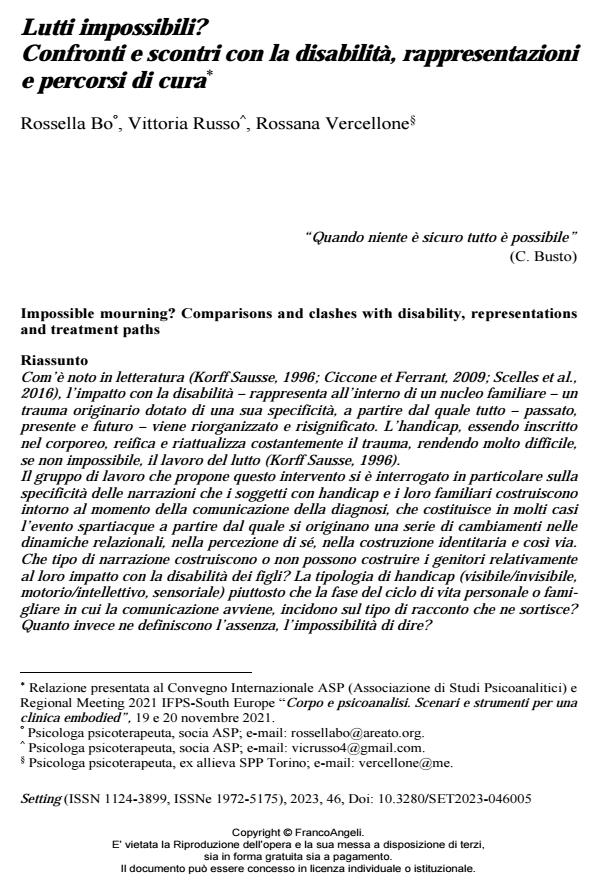Impossible mourning? Comparisons and clashes with disability, representations and treatment paths
Journal title SETTING
Author/s Rossella Bo, Vittoria Russo, Rossana Vercellone
Publishing Year 2024 Issue 2023/46
Language Italian Pages 12 P. 91-102 File size 208 KB
DOI 10.3280/SET2023-046005
DOI is like a bar code for intellectual property: to have more infomation
click here
Below, you can see the article first page
If you want to buy this article in PDF format, you can do it, following the instructions to buy download credits

FrancoAngeli is member of Publishers International Linking Association, Inc (PILA), a not-for-profit association which run the CrossRef service enabling links to and from online scholarly content.
As known in the literature (Korff Sausse, 1996; Ciccone and Ferrant, 2009; Scelles et al., 2016), the encounter with disability within a family unit represents an original trauma endowed with its specificity, from which everything – past, present, and future – is reorganized and reinterpreted. Disability, being inscribed in the corporeal, constantly reifies and reactualizes the trauma, making the process of mourning very difficult, if not impossible (Korff Sausse, 1996). In this intervention, the authors have specifically reflected on the uniqueness of the narratives constructed by individuals with disabilities and their families around the moment of diagnosis communication. In many cases, this marks a watershed event from which a series of changes in relational dynamics, self-perception, identity construction, and so forth, originate. What kind of narrative do parents construct, or are unable to construct, regarding the impact of their children’s disability? Does the type of disability (visible/invisible, motor/intellectual, sensory), as well as the phase of the personal or family life cycle in which the communication occurs, influence the resulting narrative? To what extent is it defined by absence, the inability to articulate? In this contribution we intend to explore the meaning of these narratives, the specificities of the encounter between the subjects, and at the same time, the disorganizations of many families related to denied and untold mournings.
Keywords: Disability, Parenthood, Mourning, Narration, Self-Representation, Communication, Psychotherapy
Rossella Bo, Vittoria Russo, Rossana Vercellone, Lutti impossibili? Confronti e scontri con la disabilità, rappresentazioni e percorsi di cura in "SETTING" 46/2023, pp 91-102, DOI: 10.3280/SET2023-046005